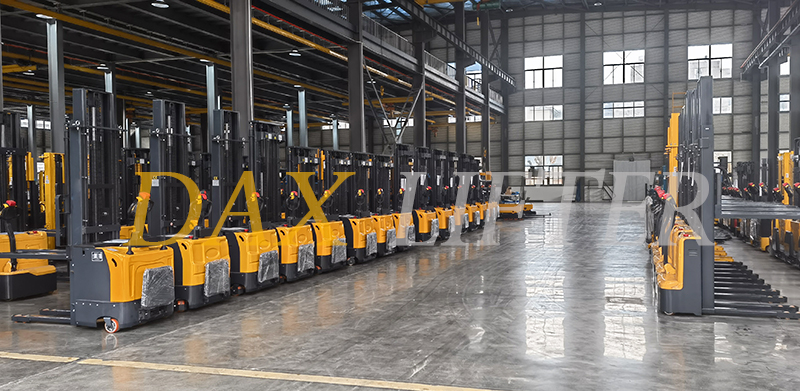Stackers and pallet trucks are both types of material handling equipment commonly found in warehouses, factories, and workshops. They operate by inserting forks into the bottom of a pallet to move goods. However, their applications vary depending on the working environment. Therefore, before purchasing, it is essential to understand their specific functions and features to select the right equipment for an optimal cargo handling solution.
Pallet Trucks: Efficient for Horizontal Transport
One of the primary functions of a pallet truck is to transport goods stacked on pallets, whether light or heavy. Pallet trucks provide a convenient way to move goods and are available in two power options: manual and electric. Their lifting height typically does not exceed 200mm, making them more suitable for horizontal movement rather than vertical lifting. In sorting and distribution centers, pallet trucks are used to organize goods from different destinations and transport them to designated shipping areas.
A specialized variant, the scissor-lift pallet truck, offers a lifting height of 800mm to 1000mm. It is used in production lines to lift raw materials, semi-finished products, or finished goods to the required height, ensuring a smooth workflow.
Stackers: Designed for Vertical Lifting
Stackers, typically powered by electric motors, are equipped with forks similar to pallet trucks but are primarily designed for vertical lifting. Commonly used in large warehouses, they enable efficient and precise stacking of goods on higher shelves, optimizing storage and retrieval processes.
Electric stackers feature masts that allow goods to be lifted and lowered, with standard models reaching heights of up to 3500mm. Some specialized three-stage mast stackers can lift up to 4500mm. Their compact design allows them to navigate freely between shelves, making them ideal for high-density storage solutions.
Choosing the Right Equipment
The key differences between pallet trucks and stackers lie in their lifting capabilities and intended applications. The choice between the two depends on the specific needs of your warehouse. For expert advice and tailored solutions, feel free to contact us.
Post time: Mar-08-2025

